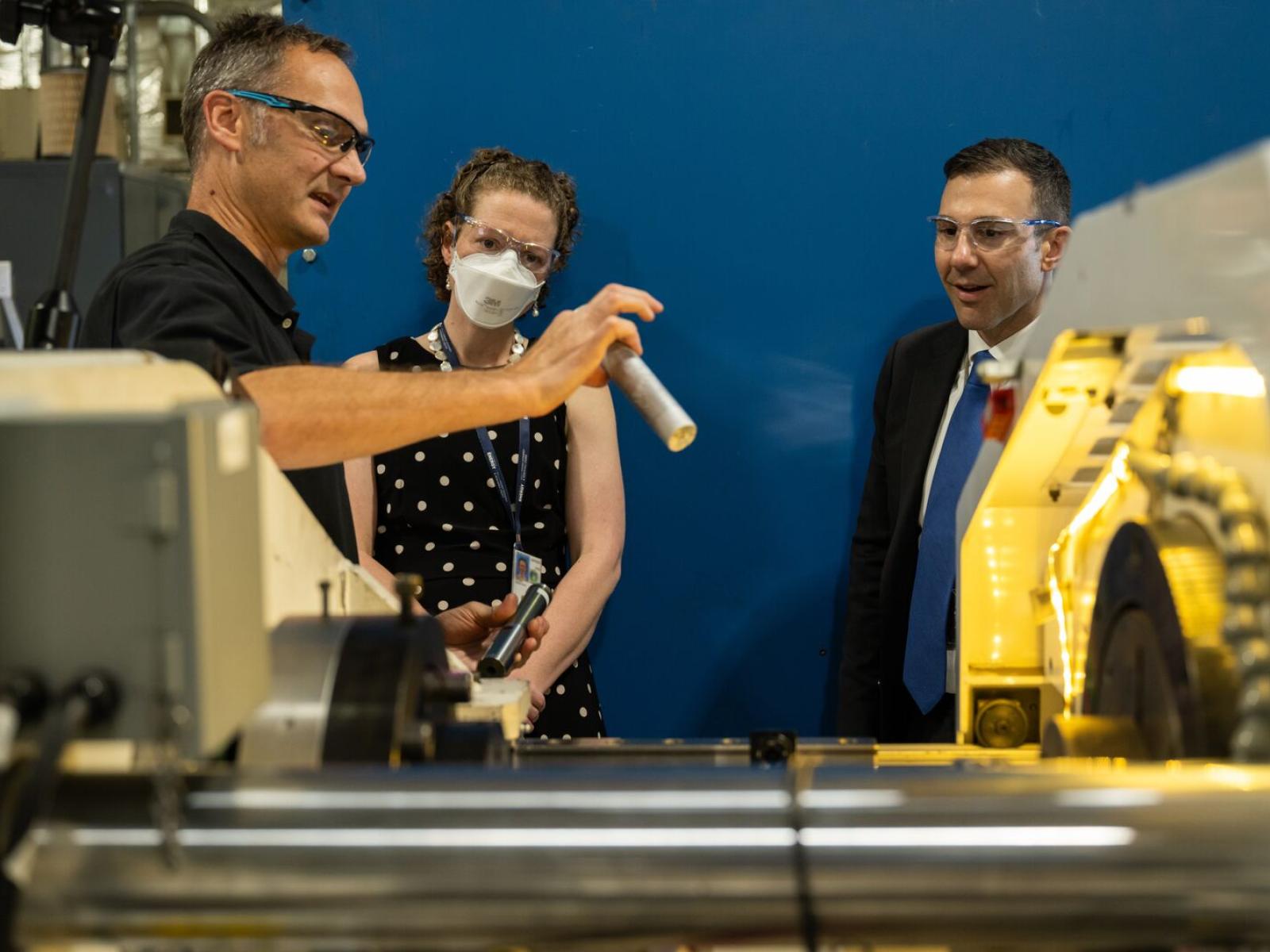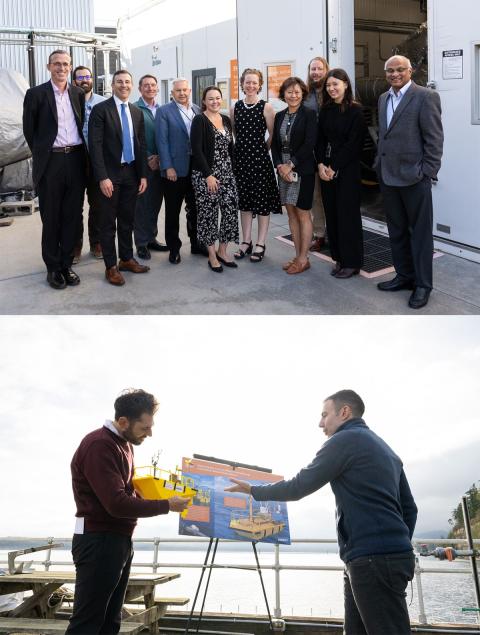DOE Visitors Focus on Energy Efficiency and Renewable Energy Research
Department of Energy leaders toured PNNL facilities and met with research staff

PNNL’s Scott Whelan (left) shows an aluminum ingot—made entirely from post-consumer scrap aluminum—to EERE’s Carolyn Snyder and Jeff Marootian. The Shear Assisted Processing and Extrusion (ShAPE) machine, developed at PNNL, can turn scrap into a new aluminum alloy with mechanical properties superior to commonly used alloys, while substantially avoiding costs, energy consumption, and carbon emissions associated with conventional mining and refining of aluminum. ShAPE’s creation of low-carbon aluminum from 100 percent post-consumer scrap is considered a key step to helping achieve net-zero buildings. (Image by Andrea Starr | Pacific Northwest National Laboratory)
Three representatives from the Department of Energy (DOE) Office of Energy Efficiency and Renewable Energy (EERE) traveled to Washington State to visit Pacific Northwest National Laboratory (PNNL) on October 19 and 20, receiving updates on PNNL’s EERE-related research.

Bottom: At the pier on Sequim Bay, Mark Severy, an Earth scientist at MCRL, talks with Jeff Marootian about instruments installed on a scaled model of DOE’s lidar buoy. Staff at MCRL use the buoys to characterize wind conditions and environmental parameters to improve offshore wind and wave models and reduce uncertainty in energy production estimates for offshore wind plants.
(Images by Andrea Starr | Pacific Northwest National Laboratory)
Jeff Marootian, principal deputy assistant secretary, Carolyn Snyder, deputy assistant secretary for buildings and industry, and Satchel Tsai, special assistant, spent a day on the Richland campus. Marootian and Tsai then traveled on October 20 to PNNL’s Marine and Coastal Research Laboratory (MCRL) at Sequim.
In Richland, much of the visit focused on EERE-funded efforts in areas including power grid modernization, energy efficiency in buildings, and grid edge and renewable energy integration. The EERE representatives toured and met with researchers at the Systems Engineering Building, learning more about PNNL’s efforts in codes and appliance standards and grid edge, as well as viewing the campus testbed for buildings control research and other capabilities. The visitors also traveled to and received briefings at the Grid Storage Launchpad, the Environmental Testing Chamber, the Lab Homes, and the Applied Process Engineering Laboratory.
Separately, Marootian and Tsai visited the Life Sciences Laboratory, learning about progress on renewable hydropower, and the Advanced Battery Facility for updates on next-generation battery technologies. Snyder concurrently conducted a town hall for staff on the topic of buildings and industry programs.
On the second day of the visit, Marootian and Tsai arrived in Sequim to get a firsthand look at MCRL and learn about research activities in areas including environmental technologies and offshore renewable energy, marine carbon dioxide removal, and the ocean as a source of food, fuels, and energy materials.
“This was a terrific opportunity for PNNL to demonstrate that our work on behalf of EERE is really making progress in addressing national needs in energy efficiency and renewable energy,” said Dennis Stiles, who leads the EERE sector in PNNL’s Energy and Environment Directorate. “Over the course of the visit, our DOE partners expressed strong support for PNNL's work and offered to assist us in key areas.”
Published: October 30, 2023